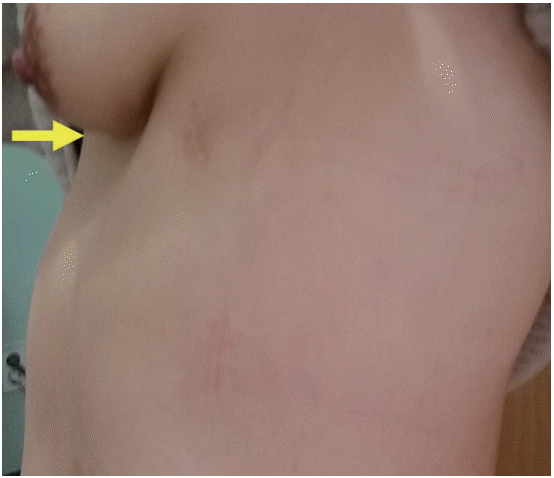Pectus excavatum: a rare cause of gastric subepithelial lesion
Article information
A 52-year-old woman presented with a gastric subepithelial lesion (SEL) on routine endoscopy. Upper endoscopy revealed a 5-cm SEL at the anterior wall of the upper body of the stomach (Fig. 1A). Neither a cushion sign nor a rolling sign appeared. Endoscopic ultrasonography revealed an extragastric lesion with sharp hyperechoic margins with posterior acoustic shadowing, which interrupted the detailed examination to observe inner structures (Fig. 1B). Abdominal computed tomography revealed a deformity in the left chest wall, with resultant compression of the stomach (Fig. 1C). Further inspection showed a sunken deformity in the left chest wall (Fig. 2). Final diagnosis was pectus excavatum, a congenital deformity of the anterior thoracic wall in which the sternum and rib cage grow internally.

Image modality findings. (A) Upper endoscopy showing a 5-cm subepithelial lesion at the anterior wall of the upper body of the stomach. (B) Endoscopic ultrasonography showing an extragastric lesion with sharp hyperechoic margins with posterior acoustic shadowing. (C) Cross sectional scan of abdomen computed tomography showing a deformity in the left chest wall, with resultant compression of the stomach.
Notes
No potential conflict of interest relevant to this article was reported.
